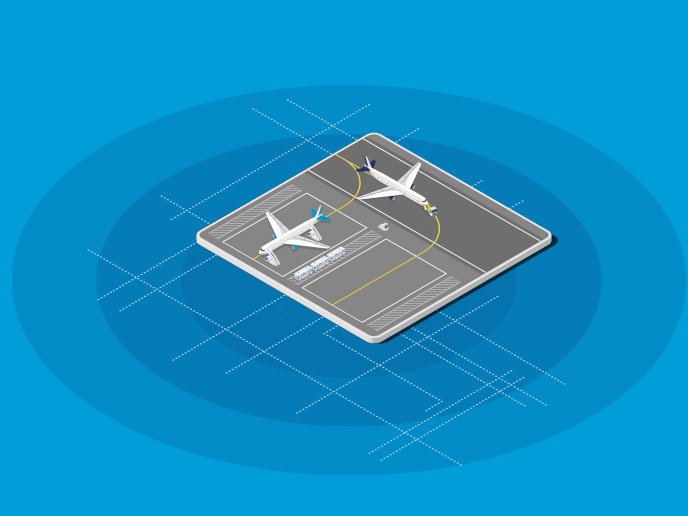I - Reducing aviation’s carbon footprint through improved traffic control
“These solutions are already helping aircraft fly more optimal flight profiles and reducing fuel consumption.”
Benjamin Tessier, HERON project coordinator
Much has been made of the potential for sustainable fuels and electric hybrid aircraft to reduce aviation’s carbon footprint. But addressing inefficiencies in air traffic management (ATM) could deliver a 10 % reduction in carbon emissions, without the need to overhaul the fleet. As a SESAR JU demonstrator project, HERON looks to deploy and accelerate the market uptake of mature solutions that could make both on-ground and in-flight aircraft operations more energy-efficient. “HERON will not revolutionise ATM, but instead aims to encourage an entrepreneurial approach, promoting promising solutions, delivering performance and safety assessments, and carrying out live demonstration trials,” says Benjamin Tessier, ATM & engineering project manager at Airbus, the project’s coordinating partner. The project is set to conduct more than 20 demonstrations over the course of the next three years. This work will include procedures to allow aircraft to taxi using a single engine, or – assisted by ground vehicles – none at all. The project will also investigate how to optimise aircraft movements on the tarmac so as to avoid waiting times on taxiways andat parking stands – all of which burn unnecessary fuel. “Our Green Apron Management demonstration is set to use emerging technologies such as sensors and artificial intelligence to enable more predictable and efficient aircraft handling during airport stopovers,” remarks Tessier.
Airborne efficiencies
In the sky, the HERON project looks to implement efficient flight paths. “More optimal flight paths, less air traffic control intervention and a better use of airspace mean less energy used, leading to fewer emissions and lower costs for airlines,” explains Tessier. The project is working to improve management of in-flight trajectories through enhanced network coordination by air traffic managers. It also seeks to implement smoother, more continuous climb and descent profiles, in place of the more fuel-intensive traditional stepped patterns. The HERON project isn’t just talking about what can be done – it’s delivering results. These include improving network management services and collaborating with air navigation service providers to set up a more flexible use of airspace by removing unnecessary altitude constraints. “These solutions are already helping aircraft fly more optimal flight profiles and, in doing so, are reducing fuel consumption and CO2 emissions,” concludes Tessier. “And we’re just getting started.”
Keywords
aviation, SESAR JU, sustainability, carbon neutrality, air traffic management, ATM, Green Deal, environmental impact, Horizon Europe, Digital European Sky, emissions, reduction



